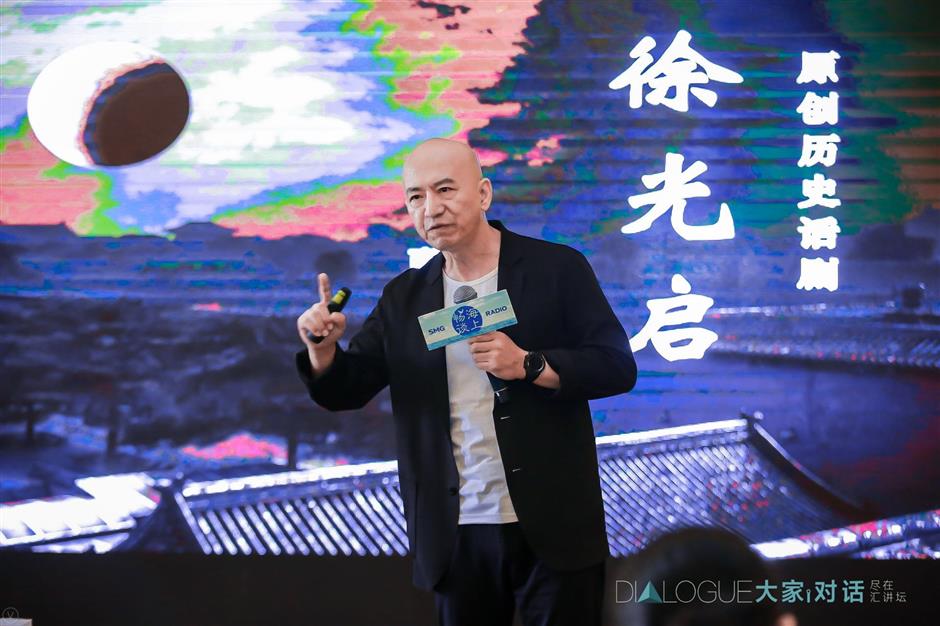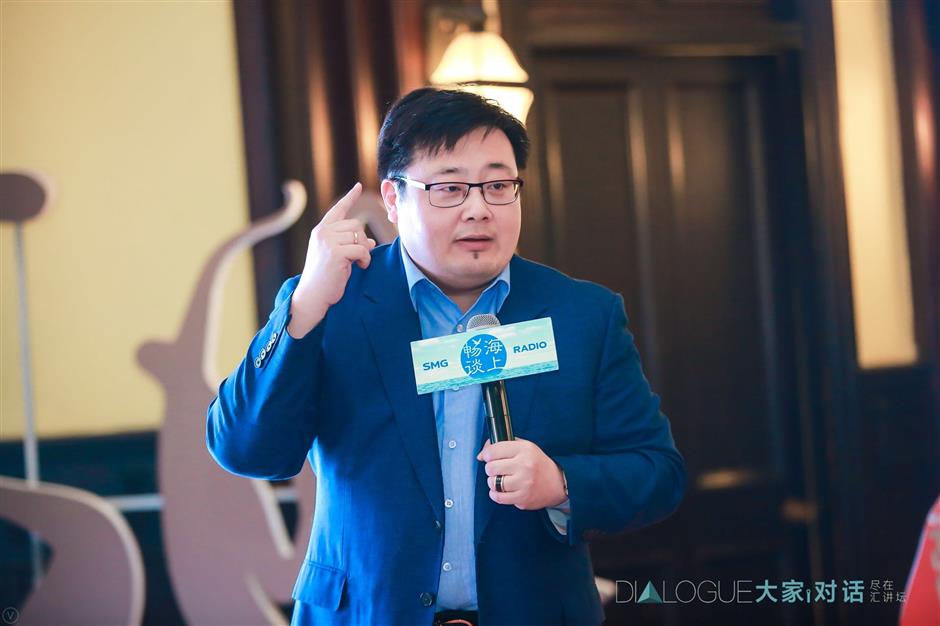Xuhui to celebrate origin of city's haipai culture

Artists and cultural celebrities introduced the history of Xuhui and their latest cultural productions at the Hui Forum on Saturday.
Xuhui District aims to highlight its status as the birthplace of Shanghai’s haipai (East Meets West) culture with stage drama, art exhibition and preserved historic buildings.
The vision was explained on a forum on Saturday where artists and cultural celebrities introduced their latest productions to the public, mainly focusing on the downtown Xujiahui area.
Cao Yu, a member with Shanghai Author Association and Shanghai Theatre Association, has created a stage drama about Xu Guangqi, a Ming Dynasty (1368-1644) scientist and official after whom Xujiahui is named. Xu translated and introduced Western science books to China between the 16th and 17th centuries and laid the foundation of the city's cultures, Cao told the Hui Forum on Saturday.
"Xuhui, especially Xujiahui became a gate for Shanghai to meet the world," Cao said. "I'd like to promote Xu Guangqi as a famous namecard for Shanghai through the drama," he added.

Cao Yu, a member with Shanghai Author Association and Shanghai Theatre Association, who directs a stage drama about Xu Guangqi, a Ming Dynasty (1368-1644) scientist and official after whom Xujiahui is named.

Han Bin, a researcher with the Shanghai Conservatory of Music introduced the history of the city’s first recording studio near Xujiahui on the Hui Forum on Saturday.
Han Bin, a researcher with the Shanghai Conservatory of Music introduced the history of the city’s first recording studio near Xujiahui where many of China’s most popular contemporary singers recorded there.
Under the blueprint, the studio dubbed the "Litter Red Mansion" at 811 Hengshan Road will be renovated into an exhibition hall for the history of China’s film and record industries.
The three-story building opened in 1921 as the offices for Electric and Musical Industries Ltd. In 1982 it became a recording studio for China Record Corp, the country’s oldest record label, and was later converted into a restaurant.
Furthermore, an ongoing exhibition, “Music and Dance Scenes in the Dunhuang Murals,” has converted the floor of Xuhui museum into a replica of a Dunhuang cave.

Tang Liqing, curator of the ongoing popular exhibition “Music and Dance Scenes in the Dunhuang Murals” at Xuhui Art Musuem.
"The exhibition involves traditional etiquette which can help visitors improve their own manners through the wisdom of ancestors," Tang Liqing, curator of the exhibition told the forum.
To the music of pipa, sheng, xun and other Chinese instruments, a holographic dancer with a waist drum from a mural painted during the Tang Dynasty (AD 618-907) is conjured up. The exhibition at 1413 Huaihai Road is free to enter. English language guides are available.
The Xuhui government has announced the development blueprint to contribute to the city government’s campaign to promote Shanghai’s culture. Historic buildings on Hengshan and Fuxing roads will be open to the public or made into innovation parks.















